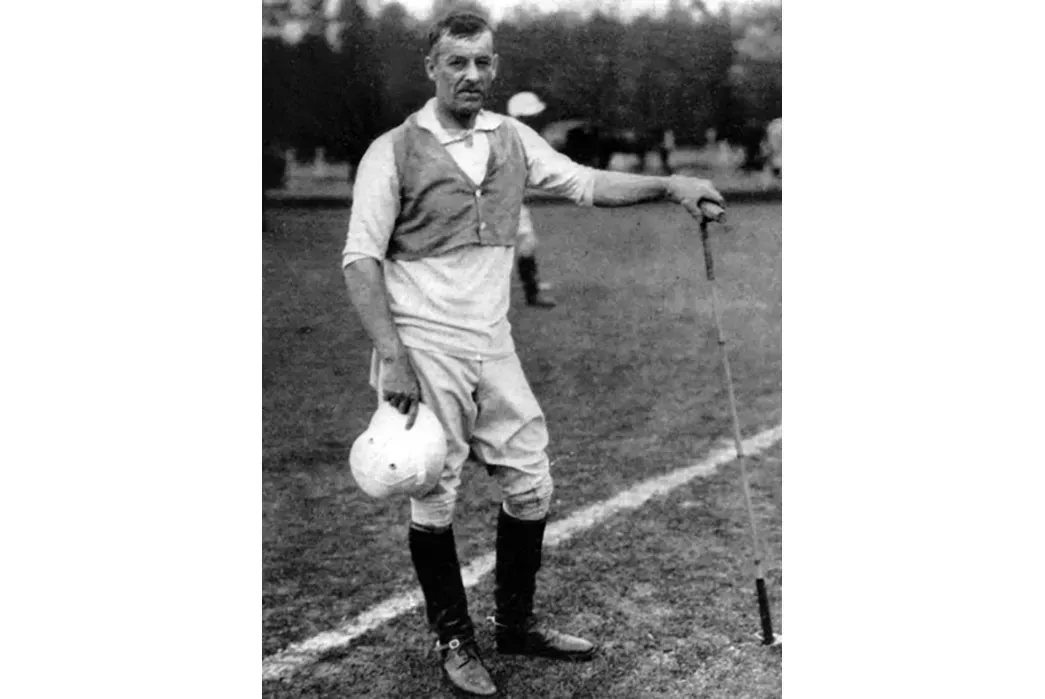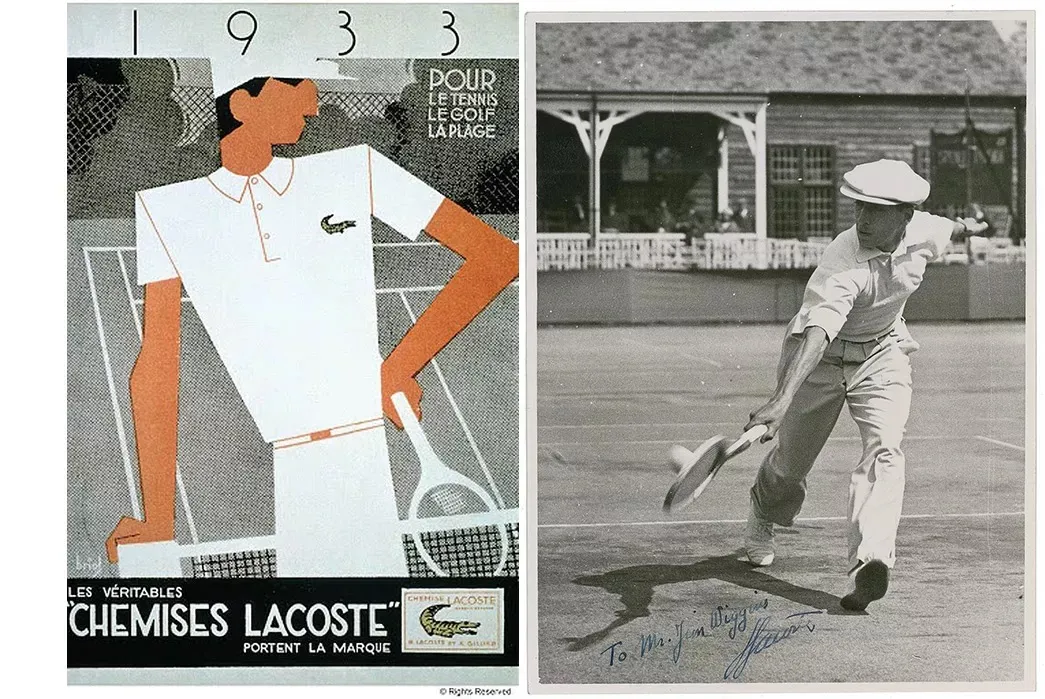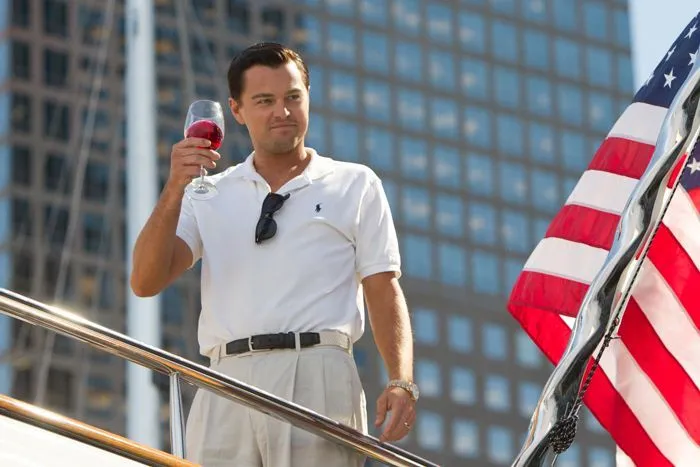

The polo shirt is one of the few items that never goes out of fashion. For both men and women, wearing a polo shirt makes it possible to make a difference and give that extra touch to your outfit, without the need to invent anything special.

Manipur, India during the early 1800s.
The origins of polo as a sport began in Manipur, India during the early 1800s. British soldiers stationed there witnessed the locals playing the sport and began playing it too. The soldiers wore long sleeved cotton shirts — traditional wear at the time. Wearing these shirts proved extremely uncomfortable but uncomfortable with how the collar flapped during the game, the players attached buttons to secure them in place. Thus, the button-down polo shirt was born. A polo shirt, by definition, has a collar, a placket with two or three buttons, and sometimes a pocket. Also known as a golf shirt and a tennis shirt, the polo shirt has its roots in tennis. In the 19th and early 20th centuries, tennis players wore long-sleeved white button-up shirts whose sleeves had to be rolled up, also known as “tennis whites.” French tennis player René Lacoste found this attire both restrictive and impractical, so he designed a white, short-sleeved cotton shirt, débuting it at the 1926 U.S. Open championship.

Polo Shirt
By 1862, the sport made its way to England, and the evolution of the polo shirt continued. John E. Brooks, one of the founders of the well-known American clothing company Brooks Brothers, noticed the ingenuity of the design while on a trip to England. In 1896, Brooks Brothers began producing their version of the button-down collared design. Britishers adopted polo from Indian natives and brought it back to the U.K. where it became synonymous with wealth, royalty, and the upper-class.

It was Argentinian polo star Lewis Lacey, though, who was responsible for conceiving the polo player logo. In 1920, he opened a sports shop in Buenos Aires, selling shirts branded with a polo player on a pony.

Buddy Austin (left) and Rene Lacoste (right) before a match, 1928.
Le Crocodile’s Révolution
Ironically, the polo shirt we know today was born from a completely different sport — tennis. Like polo, tennis ‘whites’ in the early 1900s featured a long-sleeved button-down shirt. Looking to improve the practicality of this design was French tennis star, Jean René Lacoste. Nicknamed ‘le Crocodile’ due to his agility and shot power, Lacoste won seven Grand Slam titles, making him one of the most sensational sportsmen of his era.

While most tennis stars wore a button-down shirt and tie, Lacoste went against the grain and introduced his own short sleeved, three button shirt, made from a lightweight, breathable pique cotton that improved freedom of movement on the court. Proud of his reptilian moniker, Lacoste had a crocodile embroidered onto the left breast of his tennis shirt, a piece that surprised spectators as he smashed his way to consecutive U.S. Open wins in 1926 and 1927. The first of its kind, Lacoste’s tennis shirt was the blueprint for the modern day polo shirt.

After retiring in the early 1930s, Lacoste was approached by the owner of a leading French knitwear manufacturer, André Gillier, who proposed that the two came together to sell reproductions of Lacoste’s knitted tennis shirt, complete with the infamous embroidered crocodile. In 1933, the pair founded La Chemise Lacoste. Now known simply as ‘Lacoste’, the brand is widely regarded as the first brand to produce clothes with clear, visible branding on the outside of the garment.

La Chemise Lacoste was not the first brand to popularize the knitted polo shirt. Independent makers and brands like John Smedley had already capitalized in on René Lacoste’s revolutionary design. But it was Lacoste’s formidable reputation and playful crocodile branding that made his tennis shirt so desirable.
In 1951, American manufacturer Izod gained a licensing agreement to produce and sell Lacoste shirts in the United States. Within a few years, knitted polo shirts had become an American essential. The soft tailored chemise blurred the boundaries between formal and leisure wear, worn anywhere from golf clubs to frat houses.

Ralph Intervenes
The knitted tennis shirt remained in fashion throughout the 1960s, resonating especially with ivy-leaguers who wore their Izod Lacoste shirts under their college sports jackets. Advancements in technology saw polyester rise in popularity and eventually replace knitted pique cotton in the mass-production of tennis shirts. This new fabric was less prone to fading, wearing, or bleeding in the wash, making it ideal for daily wear and sports use.

One person who didn’t favor the new polyester tennis shirts was Mr. Ralph Lauren. Then a young designer in the early stages of establishing his Polo brand, Ralph Lauren was open about his love for the patina of a well-loved garment, something that polyester couldn’t really offer. In a bid to produce the ideal knitted pique cotton tennis shirt of times-past, Ralph Lauren launched his iteration of the tennis shirt in 1972. Coming in 24 colors, Polo Ralph Lauren marketed the shirt with the tagline “it gets better with age”.

Despite the benefits of polyester, the Polo Ralph Lauren shirt overtook all others as the archetypal knitted tennis shirt. Emblazoned with the iconic polo-player embroidered motif, it wasn’t long before Polo Ralph Lauren’s knitted shirt became simply known as the polo shirt. The polo shirt has remained Polo Ralph Lauren’s most popular product for nearly fifty years.
Today, major brands that sell polo shirts are Polo Ralph Lauren, Lacoste, U.S. Polo Assn, Fred Perry, and Calvin Klein.
The polo shirt has certain features which make it both practical and stylish. Upturning the collar protects the neck from the sun. The classic polo is longer in the back than in the front to prevent the shirt from becoming untucked when you bend over. If you are wearing your shirt untucked, make sure your back pocket isn’t covered more than halfway by the length of the polo. Just like the rest of your wardrobe, a polo shirt should fit well: look for a style which is tighter on the arms and tapered through the waist. If the fit isn’t perfect, don’t be afraid to get it tailored.
The polo shirt is extremely versatile in its use. Swap out your regular shirt for a polo for a look that will keep you cool in summer weather but will still allow you to look put-together for events and evenings out. For this more formal style, wear polos with a blazer, suit or nice trousers, and pick a shirt in a luxe fabric such as merino wool or cashmere. For a smart-casual outfit, you can team your polos with jeans, cotton, linen, or terry and add white trainers instead of the traditional loafer. For outdoor summer events, wear a polo shirt in a light colour with tailored shorts and espadrilles or boat shoes.

If you are looking for a polo shirt to wear while exercising, opt for shirts made in breathable performance material. For a classic sportsman look, go for an all-white outfit: a white polo with white chinos paired with white trainers. For an off-duty sportsman look, team your polo shirt with a pair of tailored joggers and add a light bomber jacket.
Today, the polo shirt is a fashion classic and is now worn on far more occasions than just sports. It is used as a sports shirt for tennis, polo, and golf, and is also a staple for school and work uniforms and casual wear. This comfortable, practical shirt has become a staple in the modern man’s wardrobe.

The former athleisure shirt can be found in a wide variety of styles and colors, and is considered as one of the most popular garments in the world. No wonder! After all, it perfectly bridges the gap between the T-shirt and the classic button-down shirt. It is comfortable, casual and smart at the same time. And in terms of style, the polo shirt is a true all-rounder – whether you wear it to the office with chinos, to the beach with shorts or on the after-work scene with sweatpants. We love the polo shirt especially in timeless and universal colors like white, black and navy blue, and we’re in awe of its versatility.
The author of this article is Dr. Vinita Mathur (vinita @dezyneecole.com),she is an esteemed educationist, and the visionary owner of a prestigious college ,Dezyne École College . Her intellectual prowess, dedication to education, and innovative leadership have made her a prominent figure in academia and a source of inspiration for countless students and educators alike.